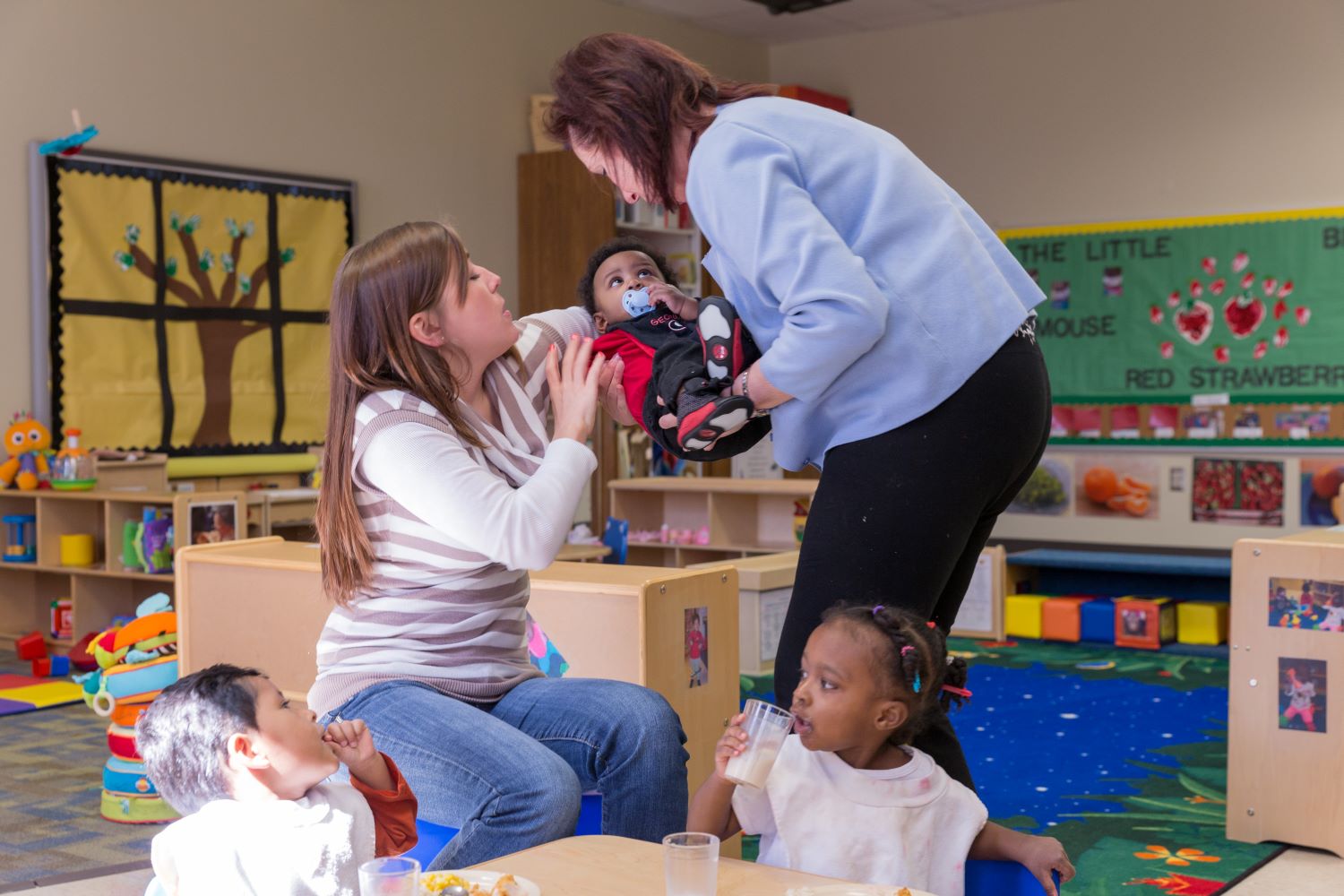
Continuity of care refers to assigning a primary caregiver to an infant or toddler at the time of enrollment and continuing that relationship until the child is 3 years old or leaves the program. Combined with small groups and primary caregiving, continuity of care provides the extended time and intimacy infants and toddlers need to form close relationships with the adults who care for them. (See 45 CFR §1302.21(b)(2).) In turn, for staff these close relationships facilitate individualized planning and care. Note that the family child care option provides an ideal setting for continuity of care. Infants and toddlers often stay with the same provider until kindergarten and may come back for care before and after school once they enter elementary school. Refer to the Continuity of Care Tip Sheet for more information about possible approaches and additional reasons for implementing it within a program.
Some programs may not be able to fully implement this approach because of licensing regulations, maintaining full enrollment, or other issues. However, leadership staff can still determine ways to:
- Minimize the number of transitions an infant or toddler needs to make
- Enhance the quality of those transitions so that adult-child relationships and cultural continuity stay front and center
Read more:
Resource Type: Article
National Centers: Early Childhood Development, Teaching and Learning
Last Updated: December 2, 2020